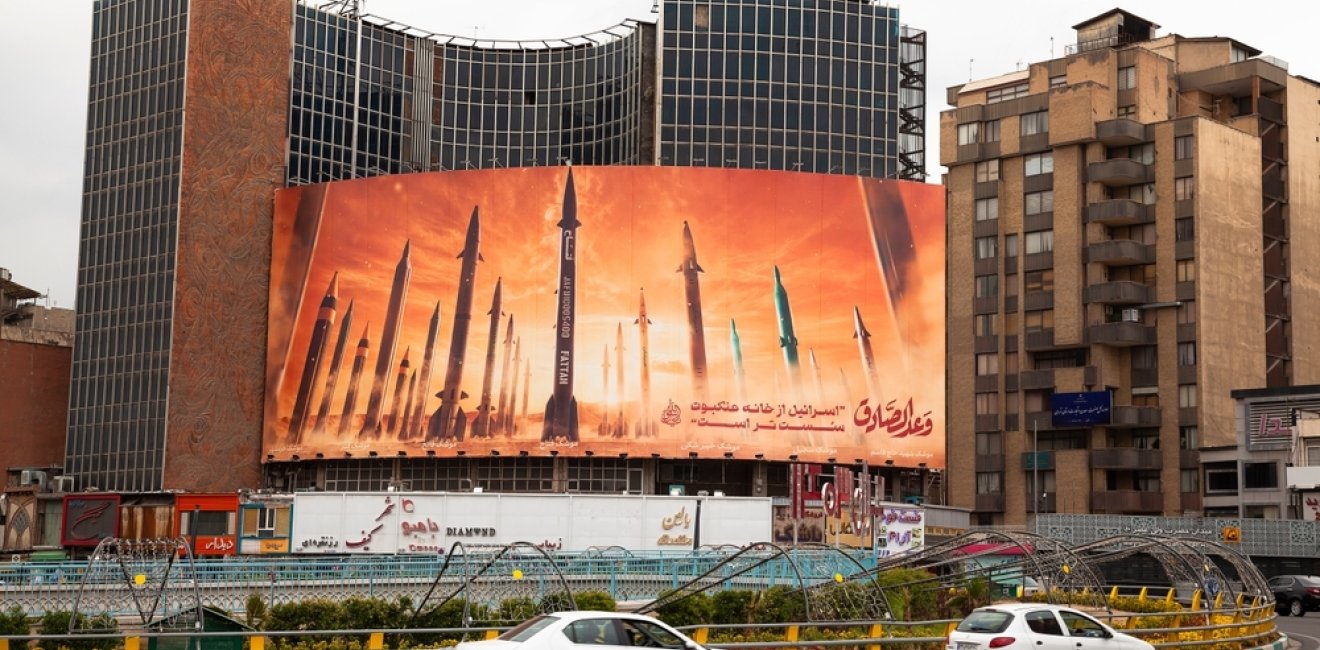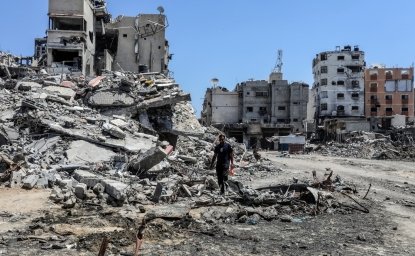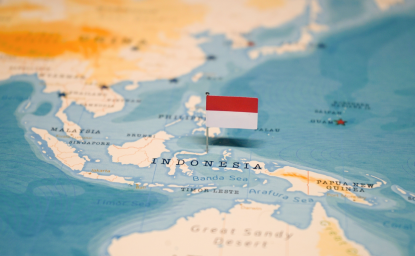The war that nobody wants is edging ever closer. In the latest escalation, Israel struck some 20 Iranian military sites, spread across three provinces, in the wee hours of October 26. Tel Aviv and Tehran have repeatedly claimed that they do not seek a full-blown war. Yet the intensifying attacks by both nations have complicated the prospects of defusing, de-escalating, or ending the broader array of conflicts that pit Israel against Iran and its “Axis of Resistance,” a network of militias in Gaza, Iraq, Lebanon, Syria, and Yemen.
Amid the escalation, there have been few visible or viable off-ramps to prevent the world’s most volatile region from getting worse.
Those conflicts have increasingly intersected across the Middle East since Hamas invaded Israel, a gruesome and deadly confrontation that has involved a militia in a territory the size of greater Philadelphia taking on a nuclear-armed country the size of New Jersey. A direct war between Iran and Israel would engage the two largest militaries in the Middle East. Amid the escalation, there have been few visible or viable off-ramps to prevent the world’s most volatile region from getting worse.
Reactions to the attack
The initial reaction by both countries was dire—albeit only rhetorically. Prime Minister Benjamin Netanyahu said Israel’s “precise and powerful” attack had achieved its goals. Tehran “must understand a simple principle: whoever hurts us, we hurt him,” he said. Itamar Ben-Gvir, the Israeli national security minister, called the airstrikes on Iran just an “opening blow.” The next stage, he urged, should damage Iran’s strategic assets.
In Iran, Supreme Leader Ayatollah Ali Khamenei vowed that the regime would consider how to “convey the power and will of the Iranian people” while urging the public not to either downplay or exaggerate what happened. In a letter to the United Nations, Iranian Foreign Minister Abbas Araghchi called the Israeli strikes “unlawful and aggressive” and appealed to the world body to condemn Israel for violating Iran’s “sovereignty and territorial integrity.”
The precedent of large and direct attacks has now been set.
But the escalations have changed the longstanding algorithm of conflict in the Middle East. “Even if this round will be contained, we are in a different situation” that is yet to fully play out, Danny Citrinowicz, a former Iran analyst for Israeli military intelligence, wrote on X (formerly Twitter). Thomas Juneau, a defense analyst and Middle East expert at the University of Ottawa warned that the region would not return to the status quo even if Iran chooses to de-escalate. The precedent of large and direct attacks has now been set. “That means the baseline of tension moving forward will be higher than it was before,” he wrote on X. “With wars in Gaza and Lebanon continuing and not close to being resolved, that means more cycles of violence.” The risk now is of an “uncontrolled escalation.”
Deals on the table
Two long-sought diplomatic deals might help ease the context of hostilities short-term: One would guarantee the release of more than 100 Israeli and other hostages held by Hamas for over a year in exchange for a ceasefire and more humanitarian aid for the Palestinians in Gaza. The other would push Hezbollah further from Israel’s southern border so its citizens could return safely to their homes in exchange for an end to Israeli strikes on Hezbollah targets in southern Lebanon. Hamas and Hezbollah are the two militias on Israel’s borders that have been trained, armed, and at least partly funded by Iran.
US diplomacy has been critical to both deals since Israel would almost certainly not consider either without broad American security guarantees. Tehran, however, has only grown angrier at Washington for its deployment of additional materiel and personnel to support Israel. The Iranian mission to the UN charged that the United States was complicit in the Israeli attack on October 26.
In the long-term, neither deal, even if approved by multiple parties in the diverse Middle East conflicts, would ensure an end to more than four decades of animosity between Israel and Iran. Their hostilities date back to Iran’s 1979 revolution, which ended the monarchy’s diplomatic recognition, military cooperation, and trade with Israel. The new theocracy dubbed Israel the “Little Satan,” with America as the “Great Satan.” Iran started nurturing a network of militias in the early 1980s, which played out in a shadow war over the next four decades.
Timeline of strikes
Both calibrated the scope of their attacks. But both rejected recognition of the other’s security needs.
In the seven-month window between April and October 2024, the direct tit-for-tat strikes between Israel and Iran grew larger or more sophisticated with each round. Both contended that the other was the aggressor. Both felt victimized. Each unleashed its military arsenal—incrementally, but increasingly—to warn the other to back off. Both calibrated the scope of their attacks. But both rejected recognition of the other’s security needs. The following is a timeline of major attacks—not including almost daily cross-border strikes between Hezbollah and Israel—over those seven months.
April 1: An Israeli airstrike on an Iranian consulate in Damascus, Syria, killed more than a dozen, including two Revolutionary Guard generals and other military officials. The attack reportedly violated the international protocol that protects diplomatic facilities.
April 13: In response, Iran unleashed more than 300 drones and missiles in its first direct on Israel; most were intercepted or downed by Israel and a US-led coalition.
April 19: In a retaliatory strike, Israel hit an Iranian air defense system near a facility in Natanz associated with Iran’s nuclear weapons program.
July 31: The political chief of Hamas, Ismail Haniyeh, was assassinated while visiting Tehran for the inauguration of a new Iranian president; the attack was widely assumed to be by Israel.
Sept. 17-18: Dozens of Lebanese were killed, and hundreds were injured when pagers and walkie-talkies exploded in an attack widely linked to Israel’s campaign against Hezbollah. “We are at the start of a new phase in the war,” Defense Minister Yoav Gallant told Israeli forces.
Sept. 27: An Israeli airstrike killed Hezbollah’s long-serving leader Hassan Nasrallah in Beirut.
Oct. 2: Iran fired 180 missiles at Israel in retaliation for the deaths of Hamas, Hezbollah, and Iranian military officials.
Oct. 26: In response, Israel attacked some 20 military targets—including missile production sites, radar stations, and air defense batteries—in three Iranian provinces.
The views expressed in this piece are those of the author and do not reflect an official position of the Wilson Center.






